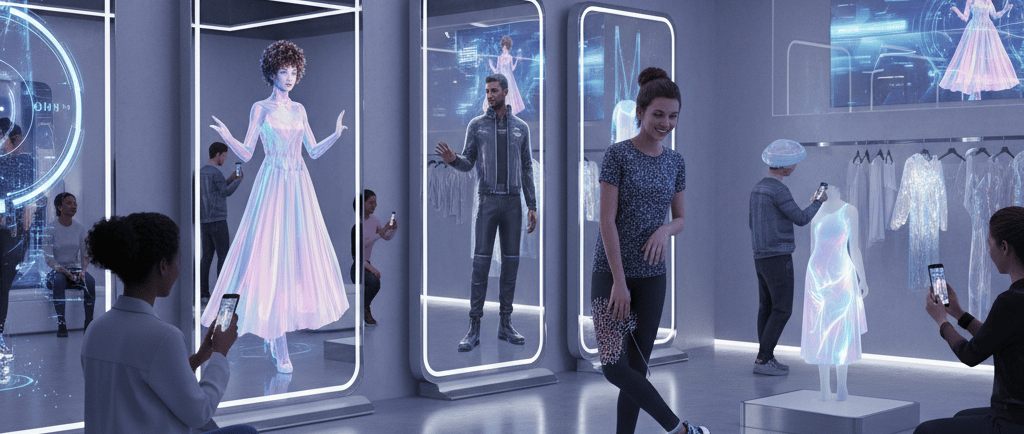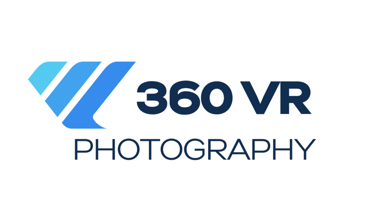AR in Fashion: How Virtual Try-On Technology is Changing Shopping in 2025
Discover how AR in fashion is transforming the way people shop. From virtual try-on mirrors to mobile AR apps, see how brands boost sales and customer experience.


👗 Seeing is Believing: How AR Virtual Try-On is Revolutionizing Fashion Retail
Introduction: The End of Online Shopping Doubt
Fashion is the ultimate form of personal expression. Yet, the moment we move from the physical store to the online cart, we are plagued by the same frustrating doubts: "Will this fit me? Will this color actually look good on my skin tone?"
Enter Augmented Reality (AR). This isn't just a futuristic gimmick; it's the digital solution to the oldest shopping problem. With virtual try-on technology, customers can finally see how clothes, shoes, makeup, or accessories look on their own live image—without ever stepping into a store or opening a delivery box.
In 2025, AR in fashion is no longer a luxury feature; it's becoming the mainstream expectation for modern e-commerce.
🤳 What Exactly is AR Virtual Try-On?
AR Virtual Try-On utilizes technology—usually a smartphone camera, but sometimes smart mirrors or dedicated AR devices—to overlay high-fidelity 3D models of products onto a person’s real-time video feed.
Think of it as the ultimate digital fitting room. It precisely maps the contours of your body, face, or feet, allowing the digital item to move realistically with you. This powerful bridge finally closes the gap between the speed and convenience of online shopping and the certainty of a physical trial.
The Undeniable Benefits of AR for Fashion Brands
Implementing AR try-on isn't just about cool tech; it directly impacts the bottom line and drastically improves the customer experience.
1. Boosts Customer Confidence (The Emotional Buy-In)
Shopping is an emotional experience. When shoppers can "try before they buy," they eliminate doubts about sizing, specific fit, or the overall style. This confidence translates directly into an immediate purchase commitment.
2. Reduces Costly Returns
The biggest drain on e-commerce profitability is the return rate. Since buyers get an accurate visual confirmation of the item's fit and look before purchase, return rates drop significantly—often by 30% to 40%. This saves retailers massive costs on shipping, handling, and restocking.
3. Enhances Online Shopping & Conversion
E-commerce platforms that integrate an AR try-on option report major jumps in user behavior. Customers stay on the site longer, engage more deeply with the product details, and conversions rise because the final purchase decision has already been virtually solidified.
4. Personalizes the Journey with AI
Modern AR systems often utilize AI-powered body mapping. This means the system can suggest not just the style, but the perfect size, color recommendations, or even complementary accessories based on the shopper's body type and past preferences, creating a truly bespoke experience.
5. In-Store Innovation: The Smart Mirror
Physical stores aren't missing out! AR smart mirrors are replacing traditional, cramped fitting rooms. Shoppers can see dozens of outfits and color combinations on their reflection without ever physically changing clothes, making the in-store experience faster and more fun. Reference Link: Learn how AR smart mirrors are transforming the physical retail store experience.
Real-World Examples Leading the AR Revolution
Major global brands have already validated the commercial power of AR:
Nike: Uses AR within its app to accurately measure shoe size using the phone camera, guaranteeing a better fit for online sneaker purchases.
Gucci & Snapchat: Partnered to allow users to virtually try on sneakers and eyewear directly through the social app's camera filter.
L’Oréal: Pioneers in beauty, they offer seamless AR makeup try-on features across their own apps and platforms like Instagram and YouTube.
Zara: Introduced dynamic AR experiences in select stores where simply pointing a phone at a mannequin would cause it to "come alive" with virtual outfits and purchase links.
The Future of AR in Fashion: Beyond the Fitting Room
By 2030, AR is expected to be a default shopping utility. We are moving toward a future where:
Metaverse Fashion: Digital clothes (NFTs) can be tried on in a virtual world, with the option to purchase the physical twin.
Blended Entertainment: Shopping becomes highly interactive, merging fashion selection with games and shareable social content, creating an entirely immersive shopping journey.
Conclusion: Experience is the New Inventory
AR in fashion is not merely a passing trend; it’s a fundamental revolution in consumer behavior. By using virtual try-on technology, retailers empower their customers with confidence, drastically reduce operational costs associated with returns, and significantly enhance satisfaction.
Fashion is no longer about forcing the customer to rely on imagination or guess work—with AR, it's about providing a real-time, personalized experience that drives sales.
❓ Frequently Asked Questions (FAQs)
Is AR virtual try-on technology accurate? Yes. With continuous advancements in AI-powered body mapping, advanced 3D modeling, and depth-sensing cameras, modern AR try-on tools are highly accurate in simulating the fit, drape, and look of clothes, shoes, or accessories on a person.
Can small fashion brands use AR technology? Absolutely. The technology is rapidly democratizing. Many AR platforms now offer affordable, easy-to-implement plug-ins for popular e-commerce sites like Shopify and WooCommerce, making it accessible even for small and medium-sized fashion retailers.
Does AR reduce product returns in online fashion shopping? Yes, definitively. Because customers can preview fit and style before purchasing, brands typically report a reduction in return rates by up to 30–40%, leading to substantial cost savings.
Do customers enjoy AR shopping experiences? Definitely. AR shopping is highly interactive, engaging, and fun. This positive experience not only increases customer engagement but also fosters stronger brand loyalty and repeat purchases.
What devices are needed for AR try-on? Most mainstream AR try-on features are designed to work seamlessly with just a standard smartphone camera, making them accessible to nearly everyone. Advanced setups, like smart mirrors, are typically used in physical retail environments.
Is AR in fashion only for clothes? No. AR is incredibly versatile and is widely used across the entire spectrum of fashion, including footwear, jewelry, watches, cosmetics (makeup), and eyewear.
Will AR replace physical trial rooms? Not completely. AR will significantly reduce dependency on fitting rooms by letting shoppers explore multiple styles and sizes virtually before their final selection, streamlining the physical try-on process for serious contenders only.

